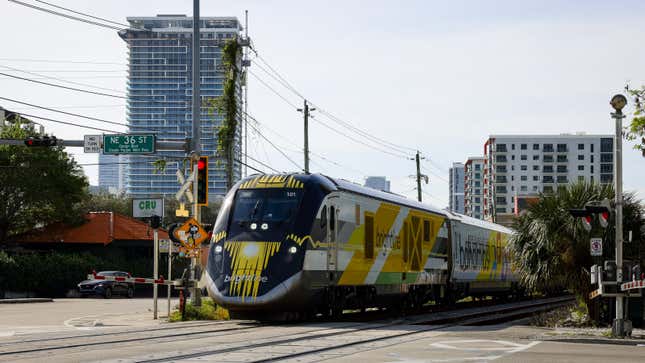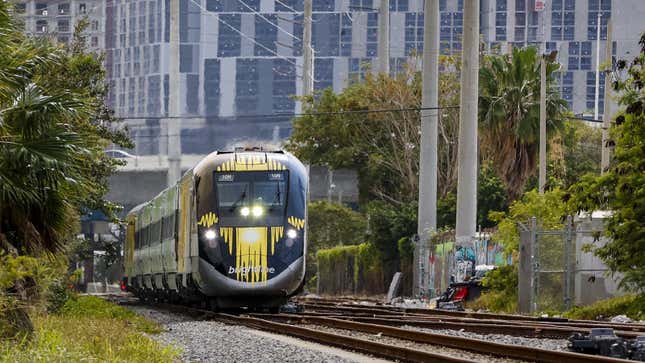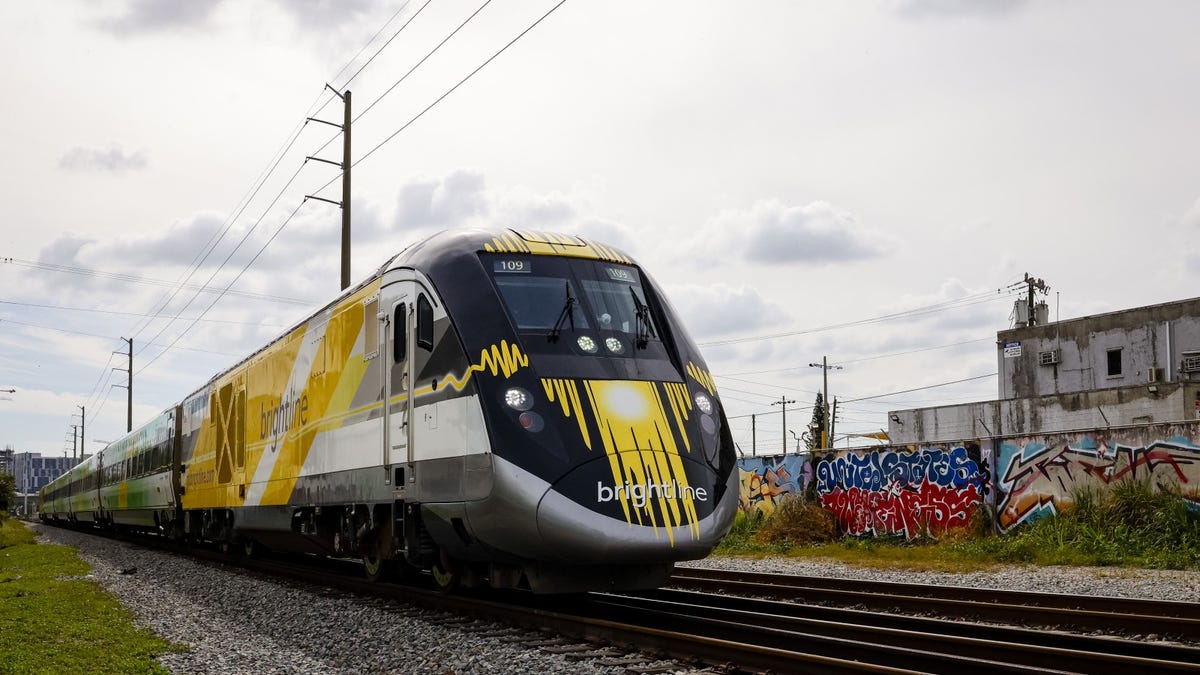A Brightline train in Florida hit and killed a pedestrian this week, bringing the high speed rail line’s death toll for the year up to nine people. The latest death on the railway follows two back-to-back crashes with cars on the rail network, which sparked an inquiry from the feds into Brightline’s safety standards across the state.
On Tuesday evening, a pedestrian was hit by a Brightline train near Atlantic Avenue in Delray Beach, Florida, reports local news outlet CBS 12 News. Police said a woman was seen walking alongside the tracks of the high speed rail service before they were hit by a southbound train.
The collision, which occurred around 11:30 pm last night, is currently being investigated by Delray Beach Police Department. However, the crash is far from being the troubled rail operator’s first death of 2024.
In fact, Brightline trains have been involved in collisions that have now killed nine people since January 10 2024. This means that nine people have been hit and killed by Brightline trains in just nine weeks.

The deaths so far in 2024 have included a 62-year-old man who was killed when his car was hit by a train and 35-year-old Emily Kayser who was killed by a Brightline locomotive in Vero Beach.
The details around each of the eight collisions vary massively, and two even included drivers attempting to bypass safety barriers before the 125 mph trains passed through. As well as drivers, the trains have also hit pedestrians walking alongside the tracks and even a man who was reportedly laying across the tracks.
While there are few similarities between the causes of the nine deaths on Brightline tracks so far this year, they clearly highlight the need for increased safety measures across the network. You shouldn’t be able to walk alongside a railway carrying 125 mph trains and level crossings on such networks should be a physical challenge to breach.

Recent data from the Federal Railroad Administration (FRA) found that 1,020 people were killed on America’s railways last year. Of those, 95 percent of all deaths on America’s railways were as a result of people trespassing on tracks or at level crossings across the country.
While it’s great that this means other kinds of rail deaths are minimal, surely it should offer a clear indication of what kinds of problems need fixing to dramatically reduce rail deaths here in America? This seems especially pressing as the FRA reports that trespass deaths on America’s railways are actually rising, with 2023’s figures more than 30 percent higher than a year before.
Maybe working to safely seal off railways so people can’t wander onto the tracks would be a good start for rail operators across America?







